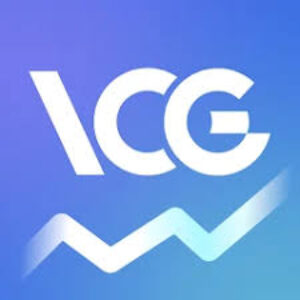
The SBI Foreign Travel Card (SBI Forex Card) is a chip-based prepaid travel card, functioning like a debit card for international use. While it offers secure transactions abroad, many users report issues ranging from transaction failures to unexpected fees. This article examines each problem—technical glitches, fees, ATM/POS declines, card blocks and online access troubles—and provides practical solutions. Insights from industry experts and the latest data on “sbi forex card rates” are included, along with a comparison table of typical forex card fees.
Overview of Problems with SBI Forex Card and How to Solve Them
| Problem Category | Common Issues | Key Costs & Fees | Quick Solutions |
|---|---|---|---|
| Technical Errors |
• Card/PIN rejection • Payment failures • Network mismatches • Not accepted in India, Nepal, Bhutan |
Card blocks after 3 wrong PINs Always verify expiry date and PIN accuracy
|
24×7 helpline: 1800-1234 Email: ops.prepaid@sbi.co.in Keep backup payment method |
| Fees & Charges |
• Hidden markups • High cross-currency fees • Multiple fee types • Inactivity penalties |
Issuance: ₹100 + GST Reload: ₹50 + GST Cross-currency: 3% + GST ATM withdrawal: USD 1.75 Inactivity: USD 1.50/month |
Load only needed currencies Avoid DCC (Dynamic Currency Conversion) Use partner ATMs |
| ATM/POS Issues |
• Daily limit exceeded • Insufficient currency balance • DCC confusion • Machine compatibility |
Daily ATM limit: USD 3,000 Separate wallets for each currency
|
Check limits via SBI prepaid portal Always choose local currency Try different ATMs/banks |
| Card Security |
• Lost/stolen cards • Fraud blocks • Emergency replacement • Overseas access issues |
Up to 2 backup cards available Keep card details secure but accessible
|
Immediate blocking: 24×7 helpline Request emergency cash/replacement Use YONO app for PIN reset |
| Exchange Rates |
• High markup over market rates • Daily rate fluctuations • Comparison challenges • Reload timing |
Aug 2024 Example: SBI USD ₹84.80 vs Market ₹83-84
Markup: ~2-3% over interbank ratesHigher than HDFC (2%) but lower than ICICI (3.5%)
|
Monitor daily card rates Load during favorable rates Compare with market platforms Avoid mid-trip reloads |
| Online Access |
• Portal login issues • Forgotten credentials • App connectivity • Customer support delays |
Multiple access channels available
Portal: oneview.prepaid.sbiApps: YONO, YONO Lite |
“Forgot Password” recovery Register on YONO for backup access Email: ops.prepaid@sbi.co.in Complaint portal: CRCF.sbi.co.in |
Technical and Transaction Errors
Customers sometimes find that payments fail or the card’s chip/PIN is rejected. Causes include expired cards, incorrect PIN, or network mismatches. First, verify the card’s expiration date and that the PIN is correct. If the PIN is forgotten or entered wrong three times, the card blocks; in that case, contact SBI’s 24×7 travel card helpline to reset or unblock the card. For internet-based or point-of-sale (POS) errors, ensure the merchant’s terminal supports chip/EMV cards. If a transaction is declined, try a different ATM or POS machine. Also note that certain countries do not allow SBI cards: it is not accepted in India, Nepal, or Bhutan. (Foreign residents in India should use local currency or international debit cards for INR transactions.)
Solution: Carry a backup payment method (another travel card or credit card). Use the SBI pre-paid customer portal to check card status and transactions. If internet banking fails, call the support numbers (1800-1234, 1800112211, etc. as listed on the SBI site). Always report a suspected technical failure immediately to the card services desk via email (ops.prepaid@sbi.co.in) so that any block can be lifted.
Fee and Charges Concerns
Hidden or high fees are the most common complaint. SBI charges an issuance fee of ₹100 and a reload fee of ₹50 (plus GST). An inactivity fee (USD 1.50/month if unused 12 months) and shortfall fee (USD 15) also apply. Additionally, ATM withdrawals incur a fee (for example USD 1.75 per withdrawal) and cross-currency transactions carry a 3% markup on the exchanged amount. In practice, this means paying about 3% above the bank’s card exchange rate whenever a payment is made in a currency not pre-loaded on the card.

Comparison with market and other banks highlights these charges. For example, on 7 August 2024 SBI’s card-sell rate for USD was ₹84.80, while mid-market rates hovered around ₹83–84; this ~2% premium is partly the hidden markup. By contrast, HDFC Bank charges about a 2% cross-currency fee and ICICI about 3.5%. Thus, SBI’s 3% fee is at the higher end. Sudarshan Motwani (CEO, BookMyForex) warns that “banks typically charge a small markup, known to be as high as 3% plus GST, over the inter-bank rate” when loading forex cards. Travelers should be aware of these costs and plan accordingly.
Below is a comparison of typical forex-card fees (approximate, may vary by bank):
| Fee Type | SBI Forex Card | HDFC ForexPlus Card | ICICI Forex Card |
| Card Issuance Fee | ₹100 + GST | ₹500 + GST | (typically ₹250 – 500) |
| Reload/Top-up Fee | ₹50 + GST | ₹75 + GST | (n/a via netbanking) |
| ATM Withdrawal Fee (per txn) | USD 1.75 (≈₹150) | USD 2.00 | USD 2.00 + (1% on amount) |
| Cross-Currency Conversion Fee | 3.00% + GST | 2% of txn | 3.5% + GST |
| Inactivity/Other Fees | USD 1.50/month after 12m | — | — |
To reduce fee impact: load only the currency you need most, avoid paying in a different currency (to avoid cross-currency fees), and limit unnecessary ATM withdrawals. Use SBI’s partner ATM networks to minimize surcharges. Regularly monitor the fee schedule (available at SBI’s travel card portal) to avoid surprises.
Table: Comparison of Major Banks’ Forex Card Charges
| Charge Type | SBI Forex Card | HDFC ForexPlus Card | ICICI Forex Card |
| Issuance Fee | ₹100 + GST | ₹500 + GST | (e.g. ₹250–₹500) |
| Reload Fee | ₹50 + GST | ₹75 + GST | (via netbanking, usually free) |
| ATM Withdrawal Fee | USD 1.75 | USD 2.00 | USD 2.00 + 1% on amount |
| Cross-Currency Fee | 3.00% + GST | 2% of transaction | 3.5% + GST |
| Inactivity/Other Fees | USD 1.50/month after 12m | — | — |
ATM and POS Withdrawal Issues
Attempted cash withdrawals or purchases abroad may be declined for several reasons: exceeding daily limits, insufficient foreign-currency balance, or dynamic currency conversion (DCC). The SBI card’s default daily ATM limit is USD 3,000. Exceeding this will cause rejections, as will making too many transactions in one day. Ensure the wallet for the correct currency has enough funds; for example, trying to withdraw AED without an AED wallet can prompt the error “insufficient funds”, because the card has separate balances for each currency.
Also avoid DCC: some merchants offer to charge your card in INR instead of local currency, which often gives a poor exchange rate. Always decline DCC and insist on the local currency. If an ATM suddenly fails (e.g. after dispensing cash or error), immediately note the transaction ID and call SBI helpline to dispute/confirm the charge.
Solution: Before travel, check your card’s ATM and POS limits and increase them if needed via the SBI prepaid portal. To fix a failed ATM case, use SBI’s “dispute form” (available on their site) and email it to cardservices@. Keep emergency cash or an alternate card handy. If withdrawals are repeatedly rejected, move to another bank’s ATM or visit a local bank branch (remember, cash over-the-counter withdrawal fee applies).
Card Blocking, Loss and Security Concerns
Forex cards may be blocked abroad due to suspected fraud, incorrect PIN entries, or expiry. If a card is lost or stolen, the user must block it immediately to prevent misuse. SBI provides a 24×7 emergency helpline and an option to block via the prepaid portal. Additionally, keep a photo copy of the card and PIN (securely) to aid replacement.
For security, SBI offers add-on “backup cards”: up to two additional Visa cards on the same account. These can be kept separately so that if one is lost, the other is accessible. Upon blocking a card, request an emergency replacement or emergency cash assistance (SBI can arrange limited cash at an overseas branch).

Solution: Dial SBI’s international helpline as soon as the card is compromised. File a lost-card report with the nearest SBI branch or representative. Use the prepaid portal or Yono app to generate a new PIN if needed (thus avoiding online purchase failures). Also utilize the “hotlist” or complaint portal (CRCF.sbi.co.in) for unresolved cases. As Raj Khosla (MD of MyMoneyMantra) notes in a related context, it is easier to manage fixed payment tools if prepared: “make sure your international spending feature is turned on” when using cards abroad. In practice, this means proactively unblocking or enabling the card for overseas use via the portal before departure.
Online Access and Customer Support
Some cardholders face trouble logging into SBI’s Forex Card portal (oneview.prepaid.sbi) or the linked apps. Forgotten credentials or portal maintenance can block account access. Similarly, contacting support can be frustrating due to long waits.
Solution: Use the “Forgot Customer ID/Password” links on the SBI portal to recover online access. If the portal is down, call customer service or email ops.prepaid@sbi.co.in. For urgent issues, SBI also maintains a complaint redressal link. It helps to register the card on YONO or YONO Lite (as advertised by SBI) which provides additional support channels. Documentation suggests checking FAQs and the user guide online for quick fixes.
Exchange Rates and Market Comparison
SBI publishes daily “card rates” which include its margins. For example, on 7 August 2024 SBI’s card-sell rate for USD was ₹84.80, whereas the interbank mid-rate was about ₹83–84. Similarly, EUR/INR was ~₹93.20 and GBP/INR ~₹108.90 at that time. These reflect roughly 1–3% markups. Sudarshan Motwani of BookMyForex cautions that “many banks charge up to 3% markup over interbank rates”. Cardholders should compare SBI’s posted rates (available via SBI or third-party trackers) with market rates on a currency platform to anticipate the effective cost of transactions.
Tip: Load currencies when rates are favorable and avoid mid-trip reloads at peak rates. Where possible, seek providers (like fintech platforms or other banks) that advertise “zero markup” or lower fees for better value.
Conclusion and Recommendations
The SBI Forex Card can simplify foreign spending, but users must navigate its quirks. Common problems—from transaction declines to hidden fees—can be managed by preparation and awareness. Key practices include loading adequate funds in needed currencies, checking and adhering to ATM limits, and keeping backup payment methods. For any blockage or loss, prompt use of SBI’s 24/7 support and online services is essential. As experts emphasize, always scrutinize charges: Sudarshan Motwani notes that leveraging one’s banking relationship may yield better rates, while Raj Khosla reminds travellers to ensure their cards are active abroad. In short, understanding the card’s fee structure and support channels—while following RBI/FEMA rules (e.g. valid documents for reloading)—will help travelers avoid disruptions.
FAQ
How can I apply for an SBI Forex Card online?
Applying online is straightforward via SBI’s net banking. Log in to SBI Internet Banking (RINB), go to e-Services → e-Cards, and select Apply State Bank Foreign Travel Card. Complete the form and follow instructions. Required documents (KYC, passport, ticket/visa, PAN, etc.) must be submitted at an SBI branch after you get a reference number.
What charges should I expect on an SBI Forex Card?
Fees include an issuance fee (₹100 + GST) and reload fee (₹50 + GST). ATM withdrawals incur fees (e.g. USD 1.75 per withdrawal). There is also a 3.00% currency conversion fee (cross-currency markup) on transactions made in a currency not pre-loaded on the card. Other charges (monthly inactivity fee, shortfall fee) may apply as per the SBI schedule. Always check the latest “Schedule of Charges” on SBI’s prepaid card portal or official site.
Can I use the SBI Forex Card for transactions in India?
No. By design, SBI’s Foreign Travel Card cannot be used for purchases in India (or Nepal/Bhutan). It is meant for foreign currency use only. Attempting to use it for INR transactions will fail. Indian residents should withdraw local currency abroad or use an Indian debit/credit card for domestic spending instead.
What should I do if my SBI Forex Card is blocked or lost abroad?
If the card is lost or blocked, immediately call SBI’s 24×7 travel card helpline or email ops.prepaid@sbi.co.in to hotlist (block) the card. Request an emergency replacement card or cash advance. You can also use backup add-on cards (SBI allows up to two additional cards on the same account) if available. For blocks due to PIN errors, the helpline can unblock it after verification. Always keep record of the card number and customer care contacts separately when traveling.
How can I check the current exchange rates on my SBI Forex Card?
SBI publishes “Card Buy”/“Sell” rates daily on its forex portal. While “rates today” can be seen on SBI’s site or credible forex information platforms, remember these include SBI’s markup. For example, recent SBI card-sell rates were around ₹84–85 for USD, which you can compare to global USD/INR market rates. Use these published rates as a reference but anticipate a 1–3% premium over interbank rates. Always compare with live rates on forex platforms to gauge the effective cost.

















